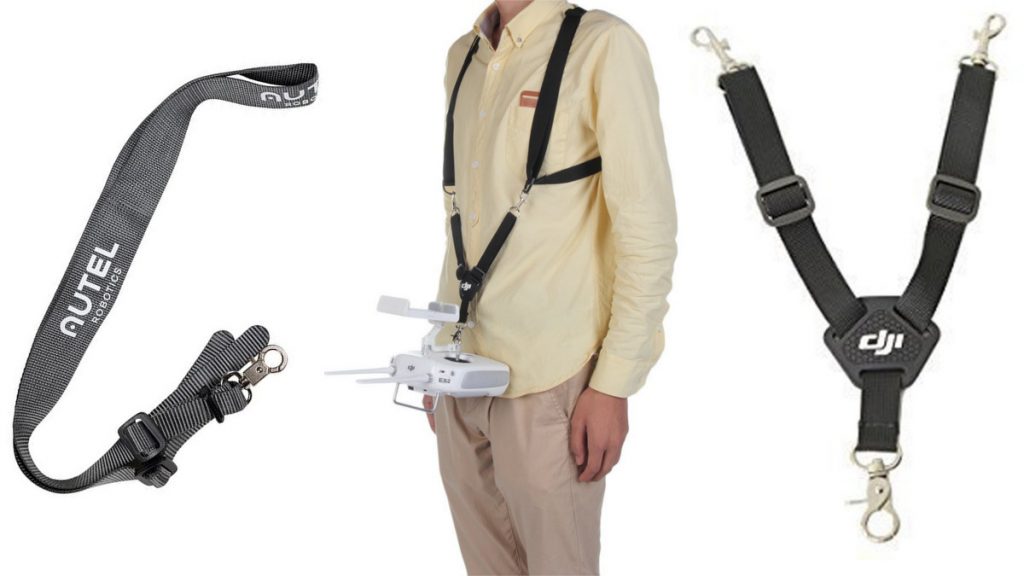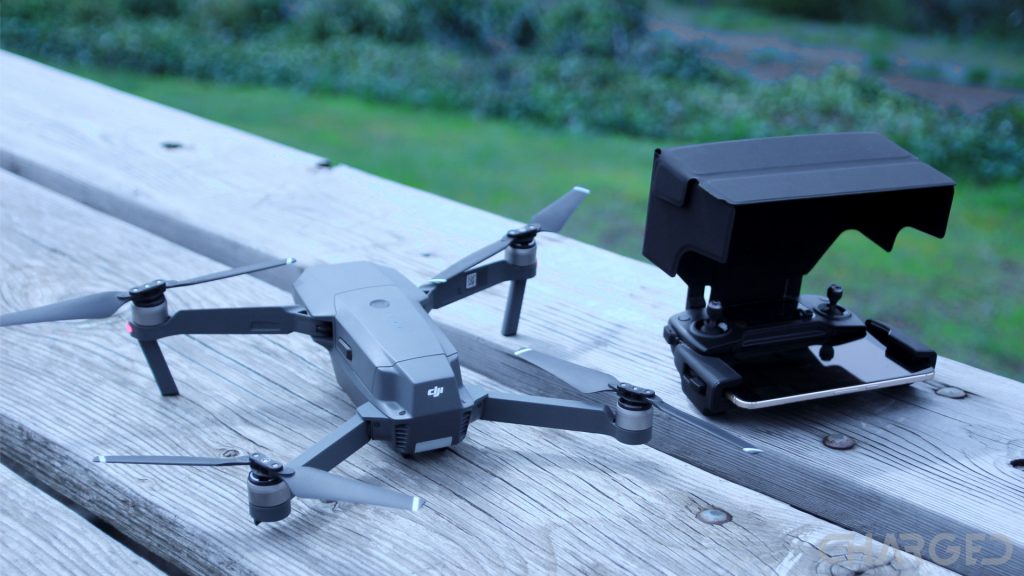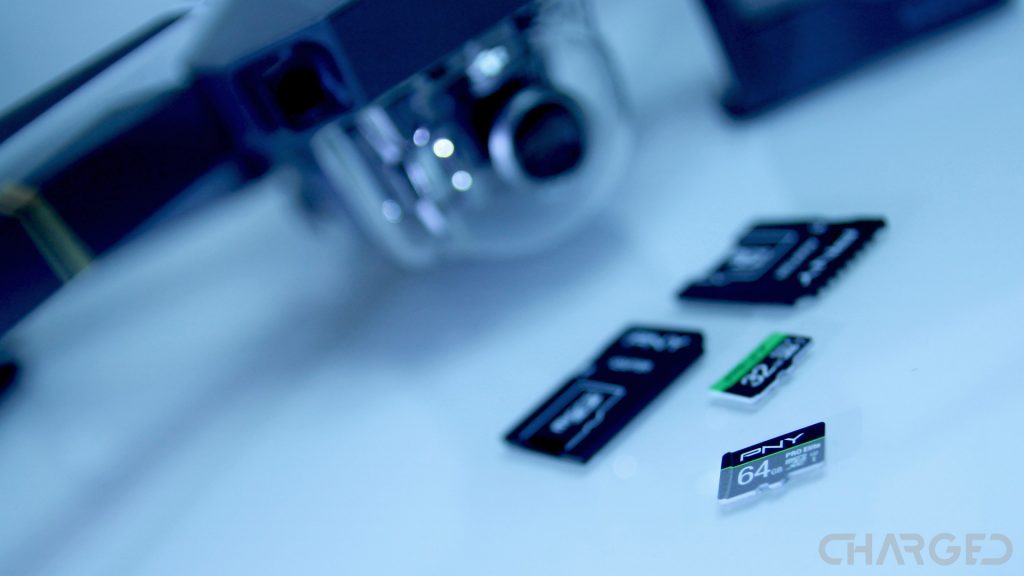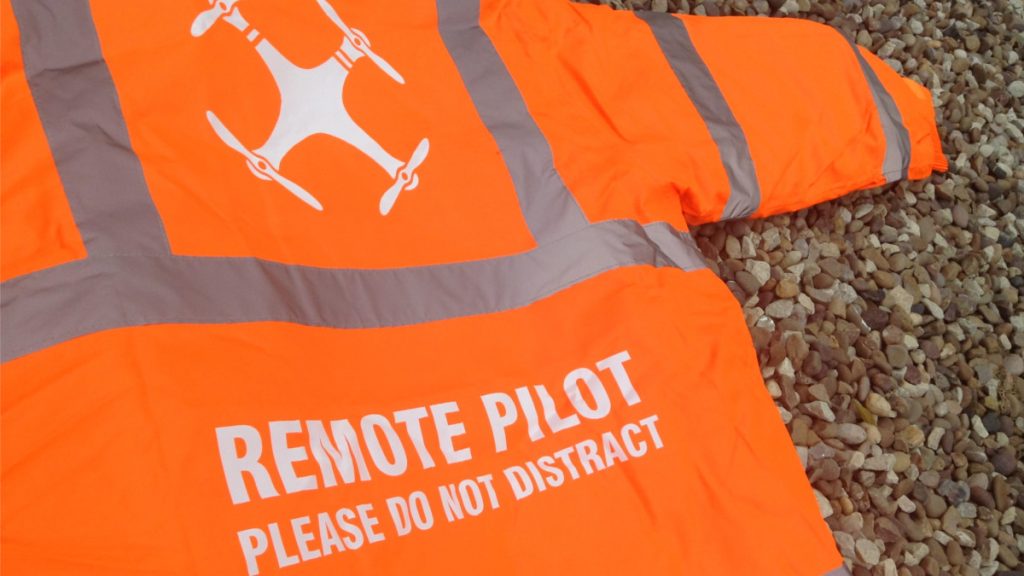
Like many of the best things in life, finding the right drone is not just about a search through the various sizes, capabilities, cameras and more, there is another factor that can make or break your experience, accessories. It can be the smallest thing that ruins your experience, like not having the right cable to connect your drone to your mobile device.
Join us for a quick walk through some essential and convenient tools to assist in your flight experience – These are the best drone accessories.
Why trust Drone Rush?
I’ve been a fan of flight since a young age; while I’ve had few opportunities at the helm of manned aircraft, the hours on my fleet of drones continue to grow. I enjoy putting cameras into the sky, silky smooth aerial imagery makes me happy. My goal is to help all pilots enjoy flight legally and safely.
Have a specific drone in mind?
Best drone accessories
Camera

We know, you likely already have a camera on your drone, it was made that way, but, if not, we highly recommend giving a camera a try. Ideally, you’ll get something that offers a live FPV experience, but sometimes all you want is just a camera in the sky.
For the FPV experience, why not check out the DJI Digital FPV system, it’s a little pricey, but it’s a top notch system that is simple to implement.
For a simple camera in the sky, you might have thought GoPro, but we’ll suggest an Insta360 camera instead. They’ve got a few, but the newly updated Insta360 Go now offers 5 minutes of recording time, all from a camera that weighs just under 20 grams. That’s 0.04 lbs. You might have to get creative to attach this pill-shaped camera, but near any drone can carry it, and enjoy stabilized flight footage with ease.
Alternatively, the DJI Osmo Pocket is an interesting option.
Lanyard

This is a super simple thing, most controllers come with a small eye-hook or anchor point for a neck strap. If not, you might consider a little DIY or attachment to make it possible. If you’ve flown at all, I don’t think I have to convince you that there are many situations where you need to put the controller somewhere safe.
A lanyard lets the controller hang from your neck, safe and sound with your hands free for other tasks.
There are many, many lanyards out there, but we must admit we are fans of the unofficial/official DJI shoulder rig for $13 on Amazon today.
Helipad

Where should I take off and where should I land my drone? Sometimes you are on the move, but when home base is stationary, a dedicated platform to launch from can be a great thing. For me, it’s mostly so that I don’t have to land in snow, mud or other uneven and dirty surfaces, not to mention it’s just fun.
Aside from the challenge of landing on a small target, a helipad is a great tool to keep your drone clean and safe. Ideally you’ll use a solid flat surface made of wood or plastic. Metal sounds good until you realize it interferes with the GPS calibration of your drone. Myself, I let fun overcome practical – you’ve seen it already, I use a BB-8 area rug as my helipad. It’s not a solid surface, which limits my usage, but it keeps my quadcopters clean and looks good.
Check out this collapsing portable landing pad for $15 on Amazon, or, if you’re crazy like me, I got a BB-8 carpet from Think Geek, it’s no longer available, maybe you want a Death Star rug instead.
FPV goggles – VR headset or AR glasses

There may be a limit to the places you can fly with an FPV headset attached to our face, but when possible, the experience is fantastic. For VR headsets, round here we are fans of the DJI Goggles for casual flight, but now there is the DJI Goggles Racing Edition for those that want to take on the Fat Shark and other experienced racing drone goggles vendors.
In the AR department, we visit Epson every chance we get to play with the Moverio glasses, that effectively augment your drone experience without breaking your line-of-sight to your drone.
Alternative controller

The Fluidity FT Aviator is not only a fun tool for flying your DJI drone, it’s also designed similarly to the joystick on actual aircraft. Interactions are made to mimic existing Mode 2 RC controllers, we’d love to see it operate like the newer DJI Motion Controller, which embraces FPV RC airplane flight characteristics.
Fluidity FT Aviator quick review:
Table
Where do you put your stuff when you’re flying? On the ground, in your pocket or does it stay in your bag? Allow me to recommend a table. You may have a picnic table or other nearby, but you might consider a small folding card table to hold all your accessories while you fly.
I’ll leave it to you to find the table that suites your travel needs, but this folding camping table for $37 on Amazon is a cool option.
Cables
I presume I do not need to preach the importance of cables, you know you need them for every device you have that runs on a battery, and many that do not. I am glad that most drones, their controllers and our mobile devices utilize just two or three, maybe four, types of connectors.
Micro USB is the most common connection around, with Apple’s Lightning following close behind. After that is the newer USB Type-C and in the odd situation, and I mean odd as both rare and as, well, odd, Mini USB still survives on some electronics today.
If you recall from our Mavic Pro unboxing, DJI includes the three common cables to attach your smart devices. For those that did not get the right cable, or are looking to change things up a bit, you’ll want to hunt for that simple tool to get connected.
The only thing I really want to say here, have a look at right-angled cables. I know my mobile devices suffer from cables getting in the way when connecting to the Mavic Pro controller – the default cables are right-angle, and my desired replacements are too.
Check out this Anker Powerline+ micro USB cable for $7, or this StarTech Lightning cable for $13 on Amazon. For the USB Type-C users, here are some micro USB to Type-C adapters for $7.
Umbrella or sunshade

Whether rain or shine, there is an argument to be made to protect yourself, or just your device, from anything that comes from above. The main idea here is that rain is bad for your drone and that direct sunlight makes it very hard to see your FPV display. There are a number of solutions to shield your controller from the sun, including cutting and folding into shape that Amazon box your drone shipped in.
If you do not want to build your own, you can buy one of the many generic or device specific sunshades. DJI has a dedicated shade for the Mavic line, I’ll let you know how it goes when it eventually gets here. Update: It’s here – I don’t like how the DJI sun shade attaches to the antennae, but otherwise it is great, folds down nice and is just enough to help you see your screen.
Please resist getting an the sort of umbrella or shade that would put you out of line-of-sight to your drone.
I cannot rightly promote any specific unit here, but this link will help you start your search for the perfect sunshade on Amazon.
Bag, backpack and case
Where will your flying camera take you? I don’t know about you, but I get the urge to hike trails or go to exotic places just to fly my drones. You better believe I do not haul everything in my hands, I have several bags to handle it all.
Finding the right carrying case, bag or backpack can be difficult. Actually, I use all of the above, swapping out based on my current needs and destination. Transporting a drone when traveling is the right time to use a sturdy case. A basic bag often gets me from my secret lair into my backyard to fly and my backpack(s) let me go hiking or otherwise head out for the day.
Related: Best drone bags, backpacks and cases
Once again, there are generic bags, backpacks and cases, as well as many custom built and official factory options. You know how rough you travel, but please consider stepping up to a more protective solution when you can. No point risking the drone over an extra pound of material or a few dollars for the next protective version up.
My backpack is not designed for drones, it just fits the Mavic Pro nicely, aside from that, maybe you’d like this SSE drone backpack for $35 on Amazon today.
Extra power
Of course, the easiest thing to do to get the most air time is pack along additional batteries. When more batteries are not the ideal solution, portable power may keep you going. Admitting that most higher end drones require a dedicated charger to power up, those that do not can hit the road with the same external battery as used for your smartphone.
Most toy class drones use AA batteries in the remote control, so remember to bring some extras, but many others, as well as many toy drone main batteries, rely on a typical USB port for power. This makes it extremely simple to charge your controller or toy drone in the car, at a public charging station or anywhere your external powerpack may roam.
Investing in a dedicated charger for the car may be a solid option for the drone itself, but you may consider simply grabbing an AC converter for the car. A $20 unit will provide enough ‘wall’ power to charge your drones on the go. Check out this Bestek 300W inverter for $30 on Amazon with two plugs and two USB ports for your car.
Lipo battery bag
Most higher end drones have strict quality standards, resulting in very few batteries explosions or fires. The same was said of Samsung before their little hiccup with the Note 7. I’m not picking on Samsung, I’m simply suggesting that any battery, regardless who makes it and under what standards, may fail. When Lithium meets oxygen, bad things happen.
To help mitigate damage and fire risk to surrounding object, a Lithium Polymer (Lipo) battery bag can save the day. A $12 investment puts your drone batteries in a fire-proof (fire-resistant?) enclosure. This is also where I permanently store all of my toy drone batteries, because they were not made with the same strict quality control.
Check out the Apex Lipo battery bag for $13 on Amazon today.
GPS tracker
“I’ll never lose my drone.” Famous last words! Most GPS equipped drones include accurate mapping of your machine on the go. This works great until the battery dies. If your drone fails to report location accurately, or does not have any location tracking at all, consider a small GPS tracker for your drone.
For the most part, I am thinking of a small detachable tracker that may not actually have GPS. A Bluetooth tracker should be enough to help pinpoint the location of a lost drone, either way, attach a small disk, crash with confidence of recovery. Now this is sounding like a bad idea.
There are options, but today, check out the Tile Sticker 2-pack for $40.
Tools

We hesitated to add this in the accessories list, after all, accessories are generally considered to be optional items, and the tools you need to do thing like put on propellers and remove batteries are very much required items. Having said that, it might be a good idea to keep more than just the basics kicking around. Might we suggest a simple multi-bit screwdriver, a spudger, perhaps some pliers, some crazy glue and some semi flexible adhesive tape.
Let’s say you drop the controller, because you decided against the lanyard above, and the battery door breaks. A little bit of tape to hold those batteries in could save your drone. What about if you come in for a hard landing, skidding a little, popping off the little rubber foot on your landing gear, a touch of crazy glue, good to go. I think you get my point here, a basic repair kit can include anything from a screw driver and tape up to a soldering iron and spare wire, it’s all about your level of comfort repairing small electronics.
I’d hate to recommend any specific tools for you, there are so many great kits to choose from, so I’ll let Amazon do the hard work – they recommend this $22 tool kit that can help fix your drone, your phone and your computer.
Double sided tape
Another tool I like to keep in my drone kit is tape. Not just any tape, I like double sided tape. It is rare that I have to affix something to a drone, or just fix a drone, in the field, but few things make the process easier than some double sided tape. I started using some heavy duty stuff, but that was overkill. I tried the small 3M Command strips, but they sometimes struggle with the plastics and paint of the drones. To be honest, the search for the ideal tape continues.
Here is the link to the heavy duty tape – it comes off easy enough from most materials and does not leave a stain or residue, plus, it’s handy around the house, your car and only costs about $5.
microSD card

I know, I know, you have a memory card in your drone already, but is it good enough? The last thing we all want to do after purchasing a drone is to fork over more money to get flying, but storage is critical if you’re taking video from the sky. Your standard Class 4 or 6 card can handle photos, but I highly recommend at least UHS-I U1 cards for 4K video. I’ve opted for this U3 64GB card from PNY, it’s $31 on Amazon right now, but watch for sales, I paid $30.
Update: I still have and use the PNY microSD card above, but I’ve been buying the Samsung Evo Plus microSD cards lately. The 256GB model is $50 right now. Be sure to get the U3 cards, the U1 cards only write at around 20MBps, while the U3 cards reach 90 MBps. You’ll need the higher speed for the 100Mbps recording speeds of the Mavic Air 2, Mini 2, Mavic 2 Zoom and Mavic 2 Pro.
For more details, check out this great SD card overview over on DGiT.
Bonus: Co-pilot or signage
Drones are becoming increasingly popular, as people understand them better, fear them less, you are likely to be approached with wonderment and questions. Whether you bring a person or maybe just an informative sign, consider having a way for your new audience to learn a little and understand that your attention is required on your craft.
Please be polite about it, there are those t-shirts that say things like “Yes, that’s a drone, no you can’t fly it,” the point is valid, but I might have you concoct a sign that explains that this is an FAA controlled aircraft (assuming yours is, of course,) licensing is required to fly and that your attention is required on the craft until it lands.
One of my most recent flights there was a hawk in the area, it was far off to my right, my flight was technical in nature, so I could not keep tabs on the bird. My wife was my co-pilot, was able to keep an eye on the hawk and had me bring my Mavic Pro in for landing when the bird started coming closer. The hawk eventually flew immediately over our heads, seemingly looking around for the small bird it had seen flying there earlier.
The Mavic Pro is tough, but I don’t want to tussle with a hawk – I have my co-pilot to thank for ensuring we avoided an incident that day.
Propellers

I know, I told you I wasn’t going to add propellers to the list. I do not consider replacement propellers to be accessories, not really, but I forgot that I consider multiple propeller types to be. You folks that race drones know what I’m getting at, for the rest of us, at least the Mavic Pro now has two types of propellers to choose from – the originals and the new Mavic Pro Platinum version for quieter and more efficient flight.
Related reading: Drone propellers – the science of flight

Drone apps

We took our time adding drone apps to this list of accessories. The base set of apps from the manufacturers are hardly accessories, but there are plenty of additional apps, such as 360 photo apps, or alternative apps for the manufacturer apps, that you can dive into. Check out our list of the Best apps for drones.
Wrap up
Truth is, there will be many small tidbits and knickknacks to your flying experience. Each drone comes with its own needs, be that a secondary cable, a screwdriver, a laptop for tweaking settings or maybe some paint, so you can see the craft better in a bright sky. Most of these are additional items to enhance your flying experience, but some are mission critical. Get the most of your experience – know your gear before you head out.
What is your number one tool in your drone kit?
Frequently Asked Questions
Safety should always be your first concern when it comes to buying accessories for your drone. To that end, we recommend you think about what you need on your flight to be safer. Maybe you fly in bright sunlight, so a sun screen is your top priority, or you fly in twilight so that indicator lights should be your concern.
After you’ve ensured the safety of those around you, think about the safety of your craft, where a new case or bag might be in order, as well as a landing pad. Other than safety, I’m pretty sure the first thing you are going to want is additional batteries, and the first thing most new pilots need may be replacement propellers.
I hope not, at least not for most of you. If you are flying a machine like most of DJI’s consumer drones, the chances of you needing a tool kit are slim, but if you fly a custom built racing drone, you will absolutely need tools.
The GPS inside your drone does a great job of identifying the location of your drone, but it only works when your drone is powered on. Should you crash and the battery pops out, or the battery simply depletes before you can find a lost drone, an external GPS module becomes invaluable.
Please be very careful about buying batteries for your drone. You should be fine if you grab a battery directly from the manufacturer, but third-party units, and the vast range of batteries for racing drones, can be problematic.
We’ll try to keep this simple: your drone is designed to operate within a certain electrical voltage range. A toy drone that came with a 1S battery runs on 3.7V, if you plug in a big 6S battery, you’ll be pumping 22.2V into the drone, which is a potential fire hazard. As long as your drone can handle the voltage (and amperage) you’re pumping into it, and the battery is wired and connected properly, we’d guess your battery is not the reason your drone won’t fly, look for other physical issues or software limits to get back into the sky.
(Also, some DJI drones have chips in the batteries, so there may be a software lock, or a firmware update required.)
Propellers have a few simple, but very important factors to be aware of. First, make sure you have the right propeller. Propellers are designed to spin in either clockwise or counter clockwise direction, look for “cw” and “ccw”, or an arrow printed on the prop and on the motor, they need to match up.
From there, make sure the prop is installed properly, you don’t want it to fall off, obviously, but it may be free-spinning on the motor shaft, instead of spinning with the motor. Finally, are you using the same size and design of prop? The physical dimensions, curvature, and design of a prop will affect its ability to create lift, as well, you will change how much speed and strain there is on the motor in order to spin the props.
The prop needs to provide the right amount of air resistance to work with the motor. Some drones are designed to emergency stop if a motor is spinning too fast or is working too hard.
It’s already the spring of 2022, and the FAA has not yet officially endorsed any specific hardware for compliance with the drone Remote ID regulations. Stay tuned, we’ll have more info when it becomes available. At least we still have some time to upgrade our drones.
By signing up, you agree to our Privacy Policy and European users agree to the data transfer policy.
